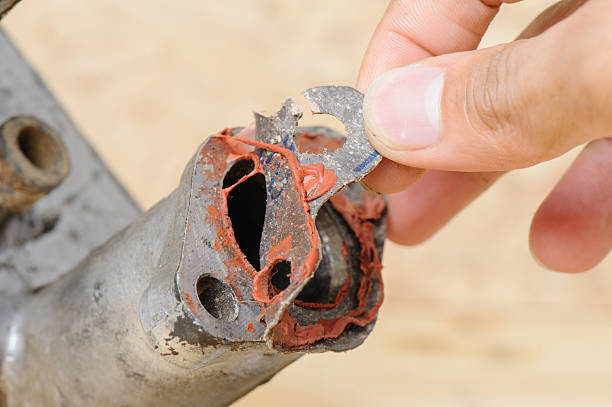How to Tell lf You Blew a Head Gasket?
You’re driving your vehicle normally and suddenly notice white smoke coming out of the exhaust pipe, or the temperature gauge needle quickly enters the red zone—these could be signs of a blown head gasket, but how can you be sure? In this article, we’ll look in-depth at blown head gaskets to find out what they are, how they fail, and most importantly, how to tell if yours is blown.
What is a Head Gasket?

The head gasket creates a seal between the cylinder block and the cylinder head to prevent air, water, and oil leaks. It’s the most important gasket in the automobile. Because the cylinder head gasket comes into direct contact with high-temperature, high-pressure gas, it easily burns while in use. To ensure dependable sealing, the cylinder gasket must be heat and corrosion resistant, as well as have adequate strength, flexibility, and thermal conductivity.
Common Symptoms of a Blown Head Gasket
Now that we’ve established the importance of the head gasket, let’s look at the indicators that may suggest a failure. Keep in mind that these symptoms could be caused by other engine issues, so seek for additional clues before jumping to conclusions.
White Exhaust Smoke

If the cylinder head gasket blown, coolant may leak into the combustion chamber. This coolant mixes with the air-fuel mixture, which should not happen. When this mixture burns, it produces a lot of white smoke. This smoke comes out of the exhaust pipe.
1.Distinctive White Smoke
The white smoke produced by a cylinder head gasket failure is different from a normal exhaust pipe. When the coolant burns, it turns into steam, so the white smoke is thicker and larger in volume and looks like steam produced by a steam engine.
2.The smell of burning coolant
Sometimes, you can smell a sweet and syrupy smell in the white smoke. This smell is characteristic of burning coolant. Antifreeze usually contains ethylene glycol, which emits a sweet smell when it burns. This is a sign that coolant is leaking into the combustion chamber and the cylinder gasket has failed.
learn more:what does white smoke from exhaust mean
Overheating Engine
The cylinder head gasket is a critical component in the engine cooling system. It seals the coolant passages, ensuring coolant circulates, drawing heat away through the engine, and preventing the engine from overheating.
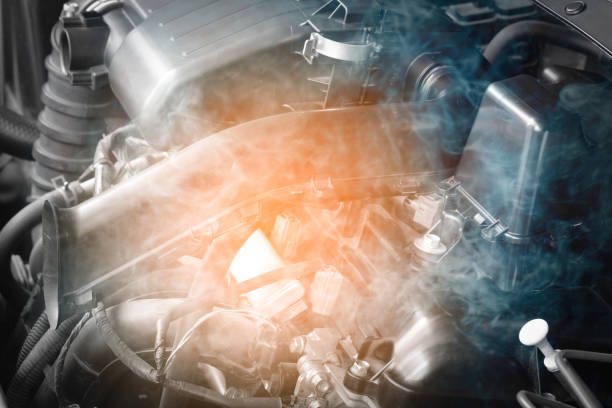
It should be noted that if your engine continues to overheat, you need to first check and solve common problems such as the thermostat and coolant level. If the engine is still hot after solving them, then you need to suspect that the cylinder head gasket is faulty.
Coolant Loss
If you are adding coolant to your vehicle more often than usual but do not notice any obvious leaks under the car or around the radiator, this is a sign of a bad head gasket.
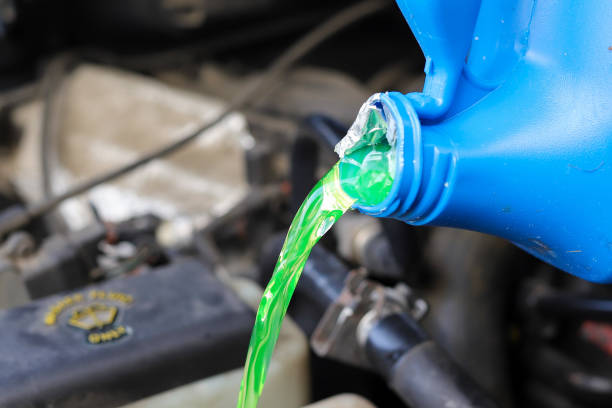
A damaged head gasket can compromise the integrity of the seal, allowing coolant to flow where it shouldn’t, such as the combustion chamber or oil system. This not only disrupts the cooling system’s ability to maintain engine temperature but can also lead to engine oil contamination.To check for this problem, follow these steps:
- Cool the engine
- Locate the radiator cap.
- Check the coolant level.
- Low coolant level: If the coolant level is low and there are no external leaks, suspect a problem with the head gasket.
Oil Contamination
When checking your oil, pull out the engine dipstick and observe the color of the oil. If it looks more like a “bubbly milkshake,” you may have a bad head gasket.

A bad head gasket allows coolant to seep into the oil passages and mix with the oil. They create a unique, milky substance. This mixture is often referred to in the mechanical world as “milkshake oil.” This phenomenon indicates that the oil is contaminated. Oil contamination reduces the lubricating effect of the oil, increases friction and wear inside the engine, and can cause serious engine damage.
Rough Engine Performance
The cylinder head gasket is a key seal that connects the cylinder head to the engine block. Its main function is to maintain proper compression in the combustion chamber to ensure efficient engine operation. Once the cylinder head gasket is damaged, it will cause a variety of engine performance problems:

Unsteady idling: A damaged cylinder head gasket will cause the engine to run unevenly, and there will be noticeable vibration when the vehicle is stationary.
Loss of power: Loose seals can cause gas leaks, reducing the engine’s power output and making it difficult for the car to accelerate or maintain speed on the highway.
Cylinder misfire: A damaged cylinder head gasket may allow coolant or exhaust gases to enter the combustion chamber, interfering with the ignition process and causing cylinder misfire.
Poor fuel economy: To compensate for the loss of compression and power, the engine may need to consume more fuel, resulting in reduced fuel efficiency and increased fuel consumption.
External Leaks
A damaged head gasket can cause coolant or oil leaks. These leaks usually occur where the cylinder head meets the engine block. To check for leaks, follow these steps:
- Park the car on clean ground.
- Start the engine: Start the car and let it run for a few minutes. This will warm up the engine.
- Shut down and cool: Shut down the engine. Wait for it to cool.
- Check underside: Look under the car for new spots of fluid.
- Check the engine block: Check the sides of the engine block for streaks or wet areas.

It’s important to note that not all leaks mean a bad head gasket. Leaks can also be caused by hoses, seals, or other gaskets. However, if you see fluid appearing where it shouldn’t be, especially near the cylinder head and engine block, it means the head gasket may be bad.
Cause Analysis of Blown Head Gasket
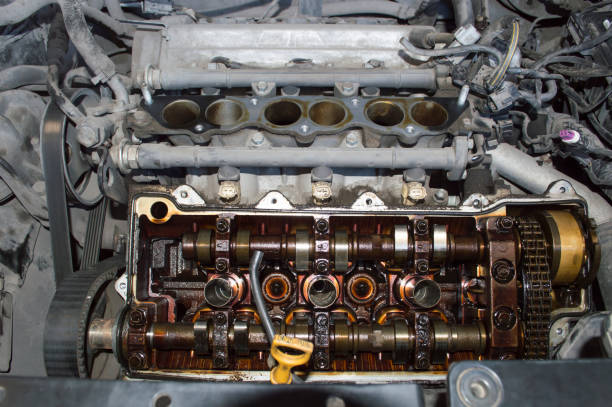
Elongation or Loosening of Cylinder Head Bolts and Nuts
Cylinder head bolts and nuts may elongate or loosen. This happens due to several factors. These include extrusion deformation of the joint surface. Compression deformation of the head gasket also contributes. High-pressure gas can cause accidental overload. Insufficient screwing depth of the bolts plays a role. Microscopic unevenness of the thread surface flattens. Bolts may shrink due to excessive torque. These issues lead to uneven pressure on the joint surface. High-temperature and high-pressure gas escapes. This burns the head gasket.
Deformation of the Joint Surface
Deformation between the head gasket and engine body occurs. This makes even compression of the head gasket impossible. The result is leakage and burning of the head gasket.
Improper Installation
Installation errors can cause issues. These include an unclean joint surface of the head gasket. Incorrect order of tightening bolts and nuts. Insufficient or uneven torque. Unequal size of the upper end surface of cylinder sleeves. These factors cause leakage and burning of the head gasket.
Engine Overheating
The engine may overheat. This happens due to abnormal cooling system operation. Late fuel supply time contributes. Long-term overload operation is another factor. Overheating especially affects areas between intake and exhaust valve seats. High temperatures cause the head gasket to lose elasticity. It becomes brittle and burns.
Poor Quality of the Head Gasket
The head gasket itself may be of poor quality. Issues include uneven thickness. Uneven curling. Insufficient elasticity. Poor material. Uneven surface. Damage during disassembly or assembly also contributes. These factors make the head gasket prone to blowing.
How to Confirm a Blown Head Gasket
While the symptoms we mentioned may indicate a bad cylinder head gasket, how to identify a bad cylinder head gasket so that it can be repaired promptly. Here are some of the methods Caleph engineers use to confirm a bad cylinder head gasket:

- Compression Test: First remove the spark plugs and turn the engine. Then install a compression tester on each spark plug hole. Measure the pressure in each cylinder If the pressure value is too low or varies too much, the cylinder head gasket is damaged.
- Leak Test: Use a pressurized gas cylinder to measure the leakage percentage. This test will determine where the pressure is leaking. The pressure leaks into the cooling system or other cylinders. This indicates a bad cylinder head gasket.
- Chemical Test: Use a special liquid to test the combustion gases in the cooling system, and the change in the color of the liquid in the tester indicates the presence of combustion gases in the coolant.
- Visual Inspection: Remove the cylinder head. Check if the cylinder head gasket is damaged Check for cracks, burn marks, or corrosion around the combustion chamber opening
Note that these tests usually require specialized equipment and expertise. If you suspect a head gasket has burned, you should consult a professional technician.
Can You Drive with a Blown Head Gasket?
So, you’ve just had a blown head gasket. The question is: Can you continue to drive your car?The straightforward answer is: You shouldn’t.

The long answer is: While your car can be driven with a blown head gasket, continuing to drive it without repairing it can result in serious and expensive engine damage. Here’s why:
Overheating: A faulty head gasket can cause your engine to overheat, potentially warping the cylinder head or engine block.
Compression loss: Your car’s performance will quickly degrade and can damage other engine components.
Coolant in the oil: This mixture can cause your engine to not get adequate lubrication, leading to increased wear and potential clogging.
- Oil in the coolant: This can clog the cooling system, leading to more overheating issues.
Imagine it like trying to run a marathon with a sprained ankle. Sure, you might hobble along for a while, but you’ll suffer more invisible damage in the long run. That’s why it’s important to repair a faulty head gasket.
Costs of Repairing a Blown Head Gasket
Now let’s get to the part that everyone cares about – the cost of repair. Repairing a blown head gasket can be expensive, mainly because of the labor costs of the job. Here is the rough answer:
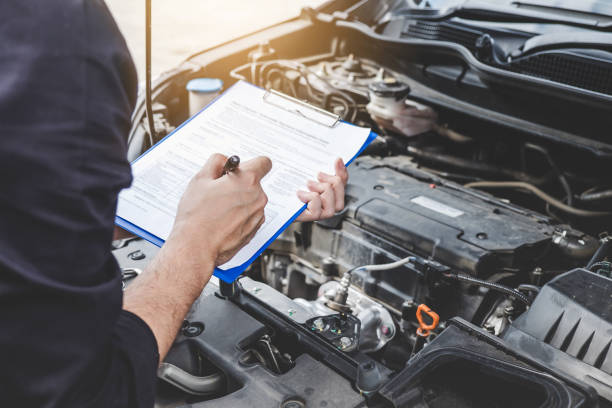
- Parts: Head gaskets are usually between $50 and $200, which is relatively cheap
- Labor: This is where the cost increases, and the labor cost of repairing a head gasket can range from $900 to $2000 or even more, depending on the make and model of your car.
- Additional repairs: Often, other parts may need to be replaced at the same time as the head gasket, which increases the cost.
In total, the required repairs can cost between $1000 and $2500 or even more. While not cheap, it is still cheaper than replacing the entire engine!
Tip: Some auto parts stores sell chemical valve gasket sealants. While it can provide a temporary solution for very minor leaks, it is not a reliable solution for serious valve gasket leaks.
Preventing Head Gasket Failure
Before installing a cylinder gasket, apply a 0.03-0.05 mm sealant to both sides. This improves the fit and makes future disassembly easier. Avoid using butter as a sealant. While it increases tightness, it can cause the gasket to stick to the joint surface. This makes disassembly difficult and can damage the gasket.

- Before installation, the warpage of the two joint surfaces of the cylinder head and the engine body should be strictly checked.
- Check whether the protrusion height of the upper end surface of each cylinder sleeve on the plane of the engine body is high enough and uniform.
- Check whether the quality of the cylinder gasket is qualified.
- During the installation process, tighten the bolts and nuts evenly as required and reach the specified torque.
After installing a new cylinder gasket, check and tighten the cylinder head bolts and nuts after 10-15 hours of engine operation. Continue to check tightness every 240-250 hours of operation. This prevents loosening and potential engine damage.
Conclusion
Dealing with a blown head gasket can feel like navigating a minefield. lt’s aserious problem that can lead to extensive engine damage if left unchecked.But armed with the knowledge from this guide, you’re now better equipped tospot the warning signs early.


